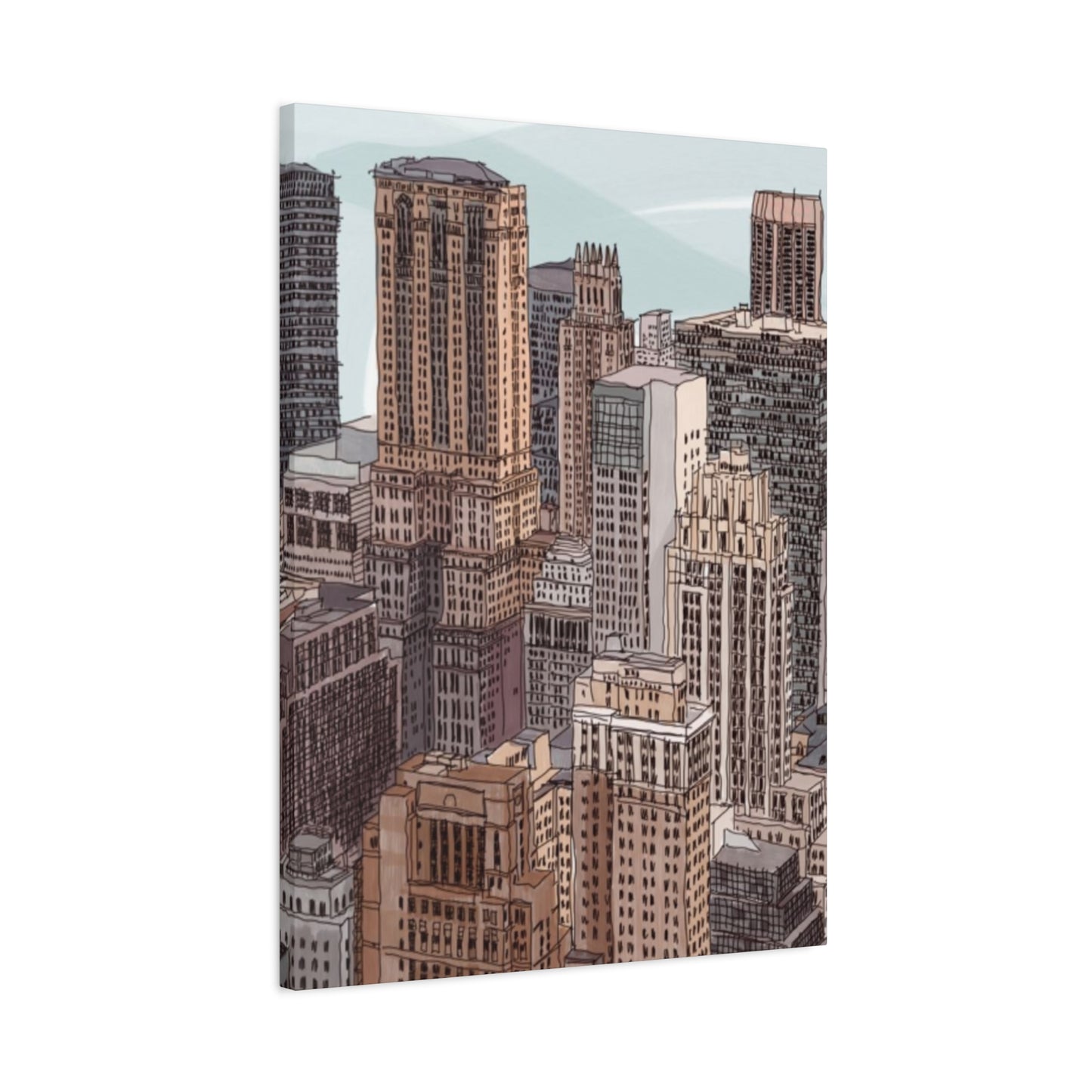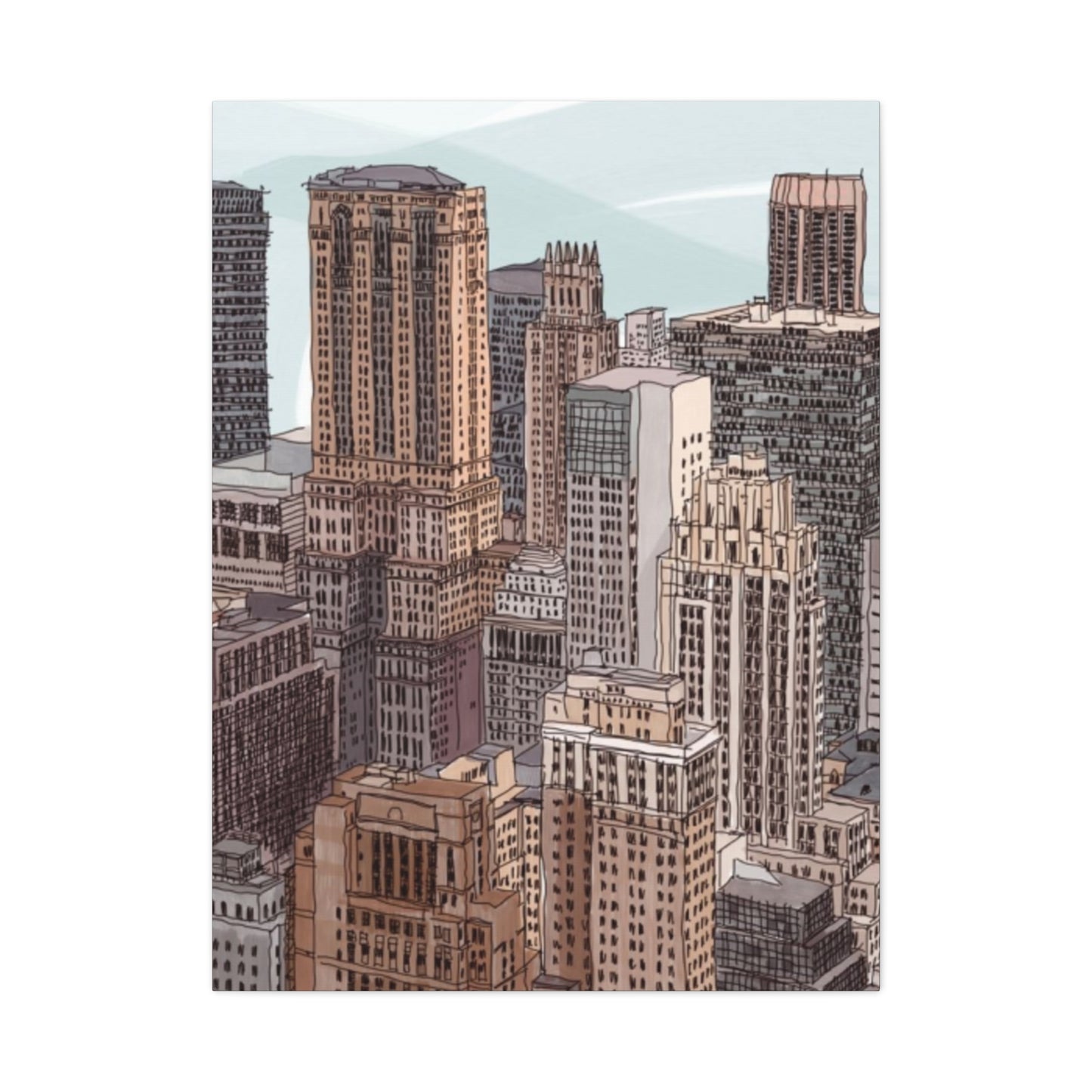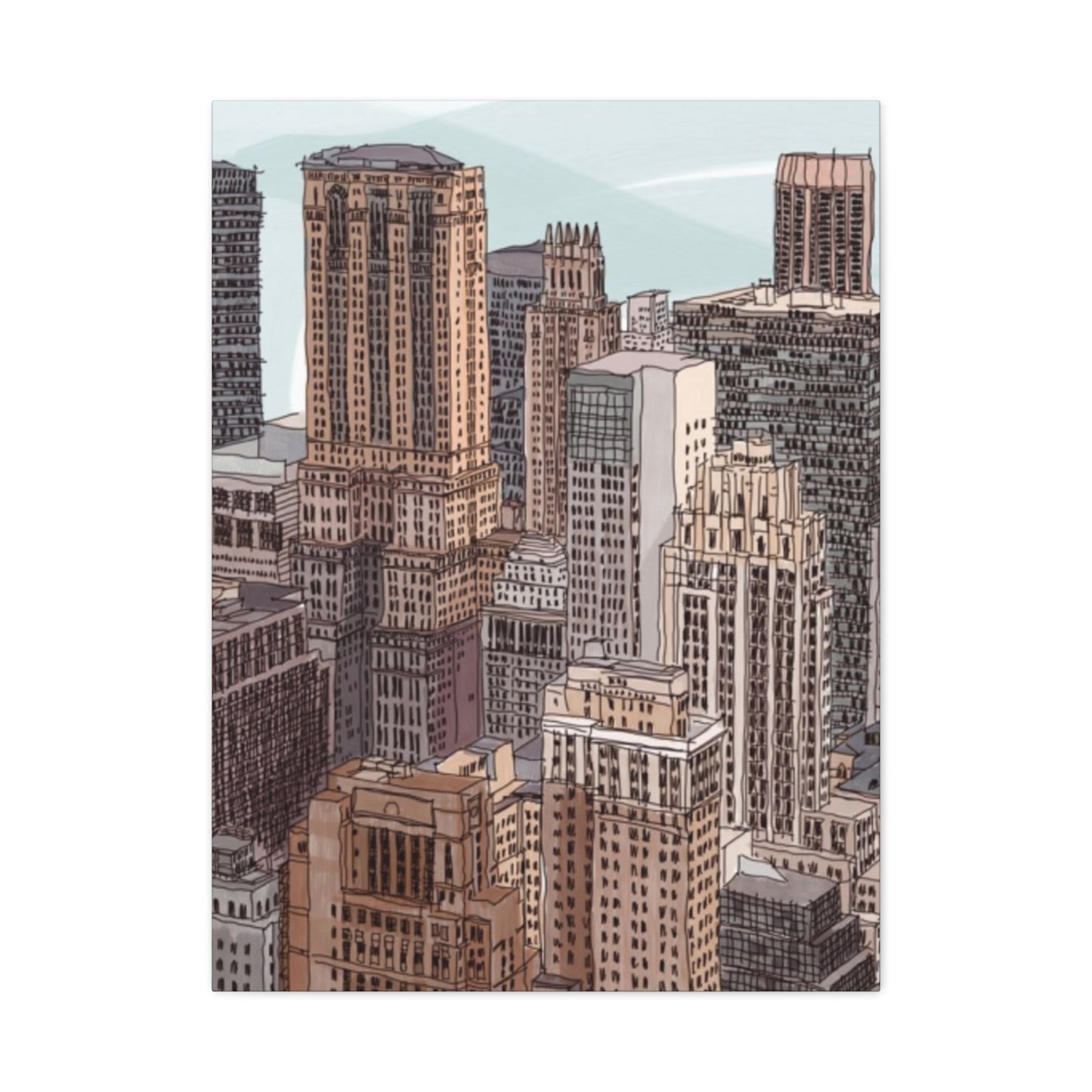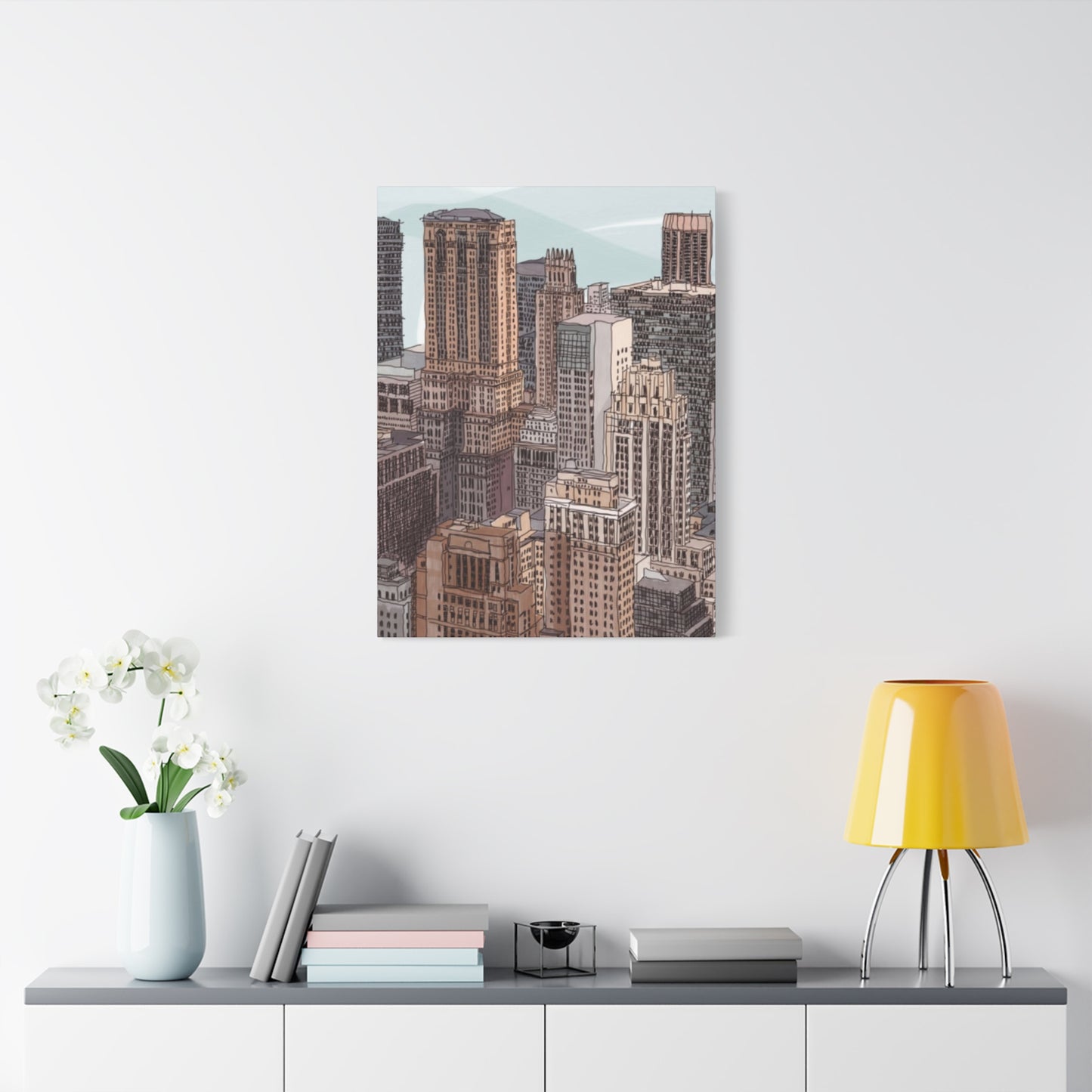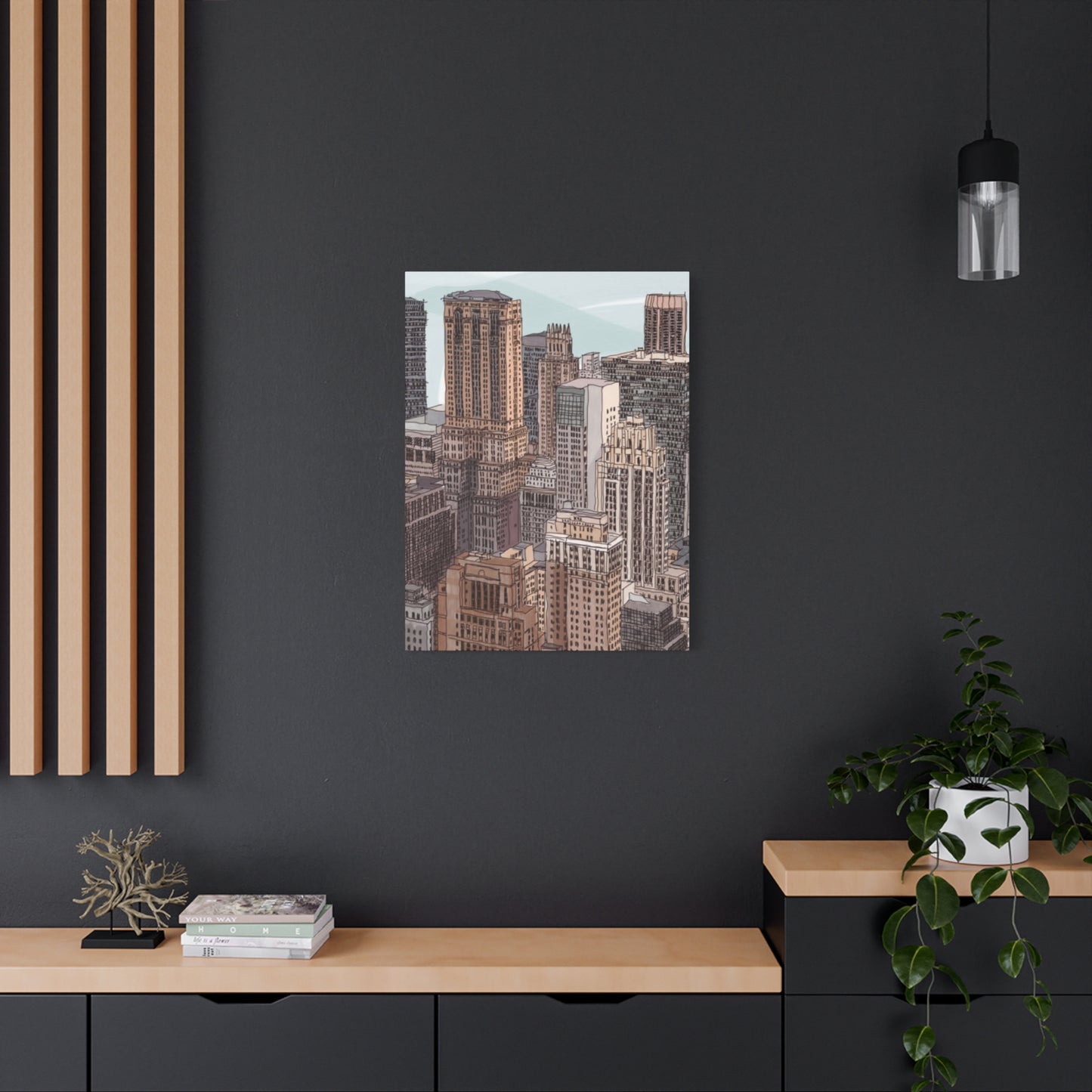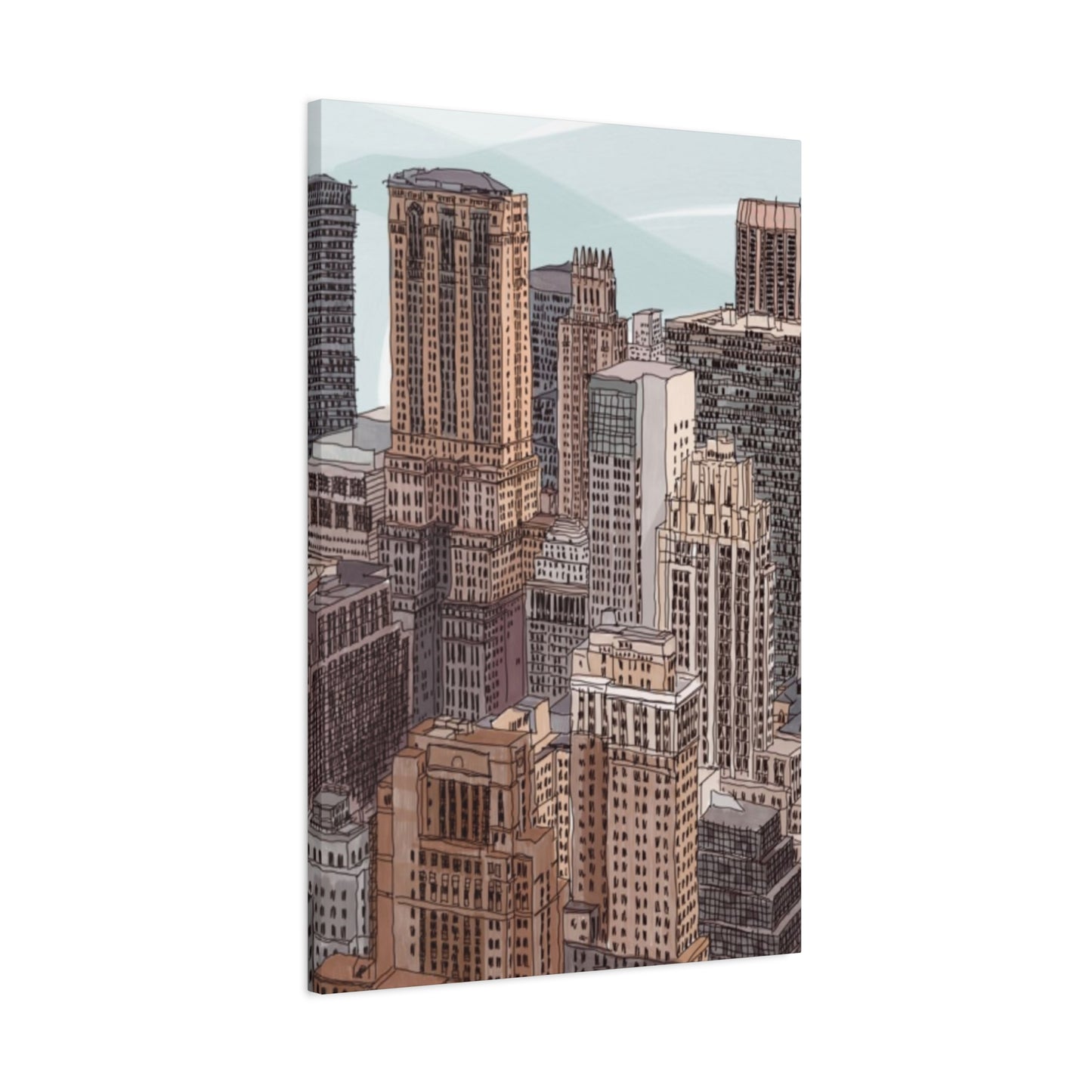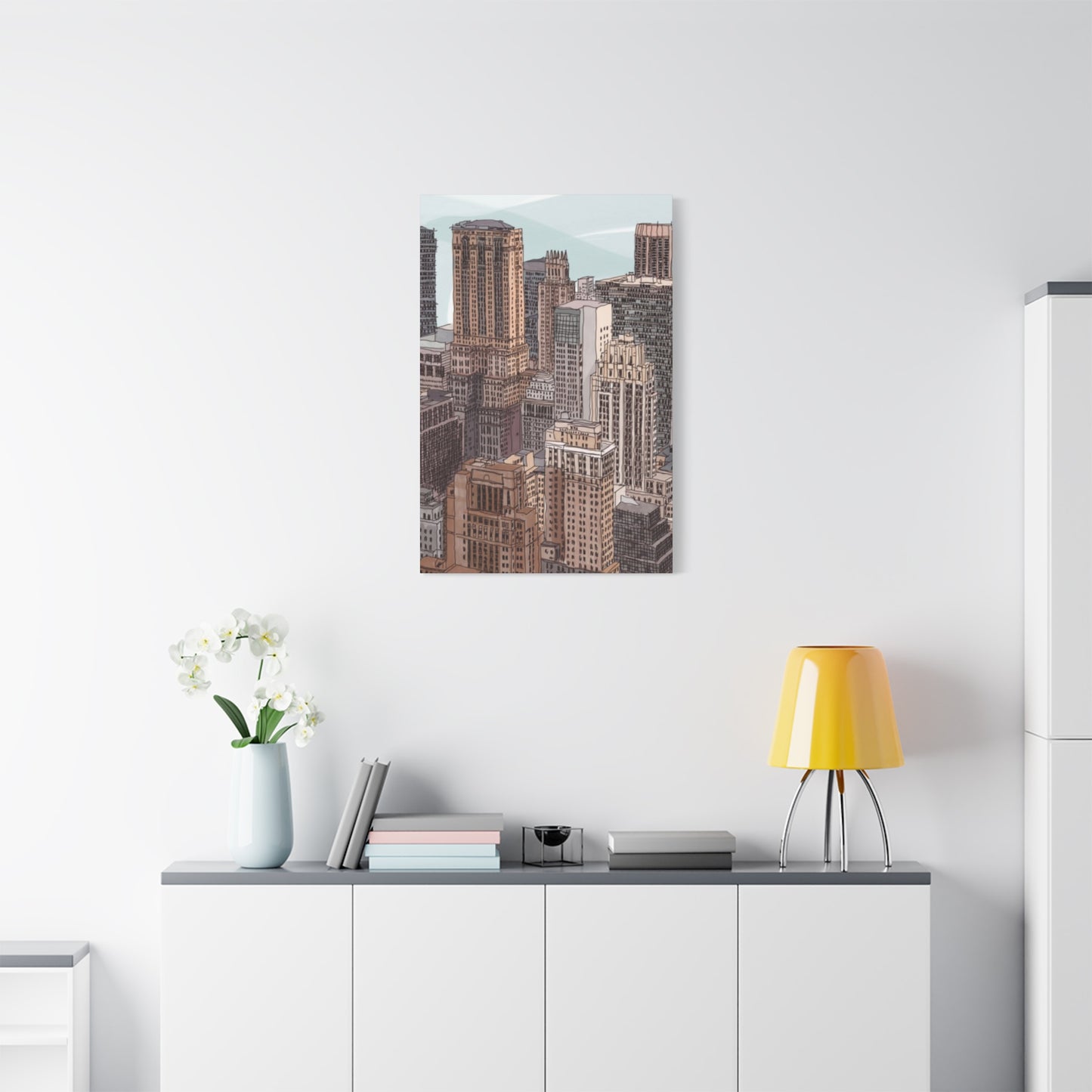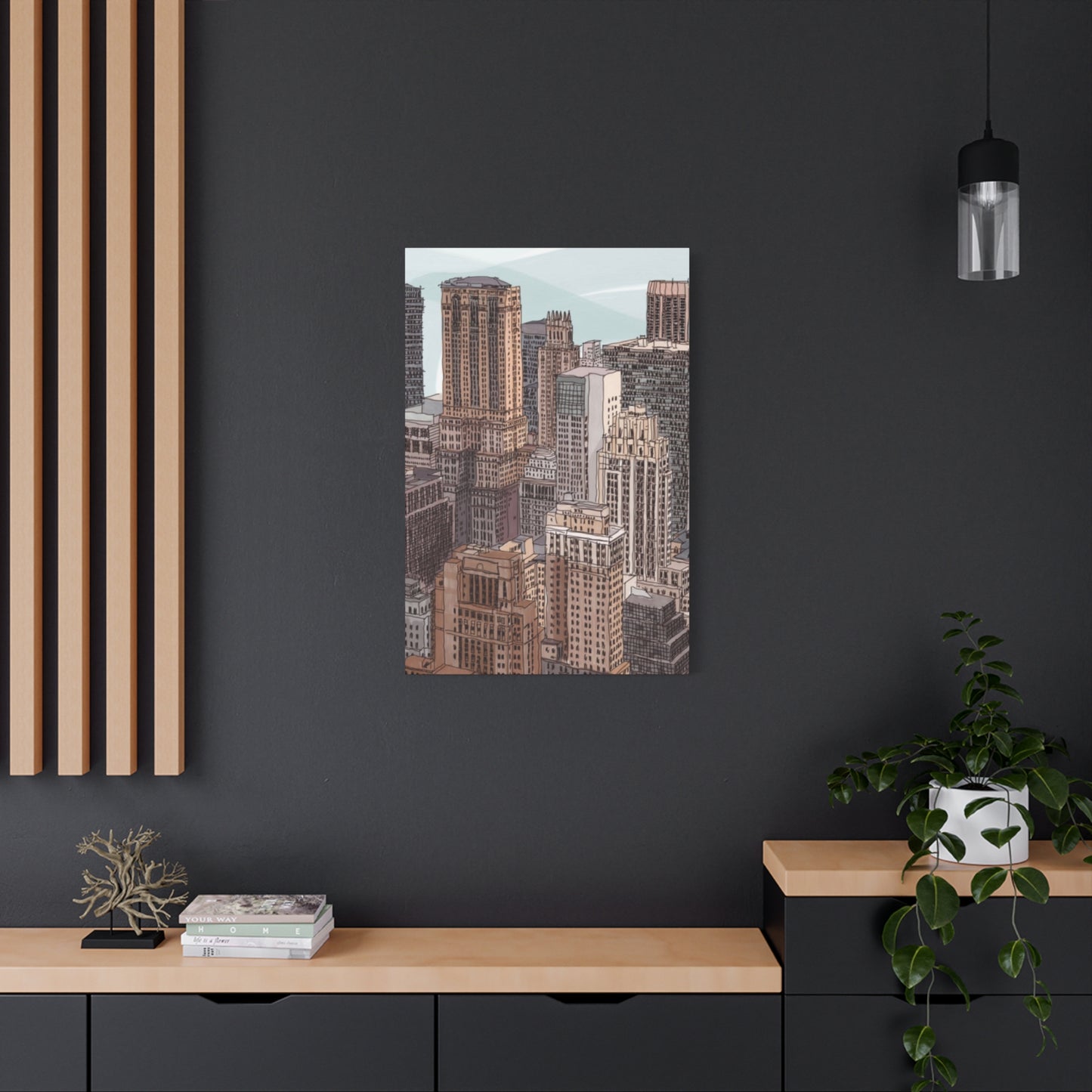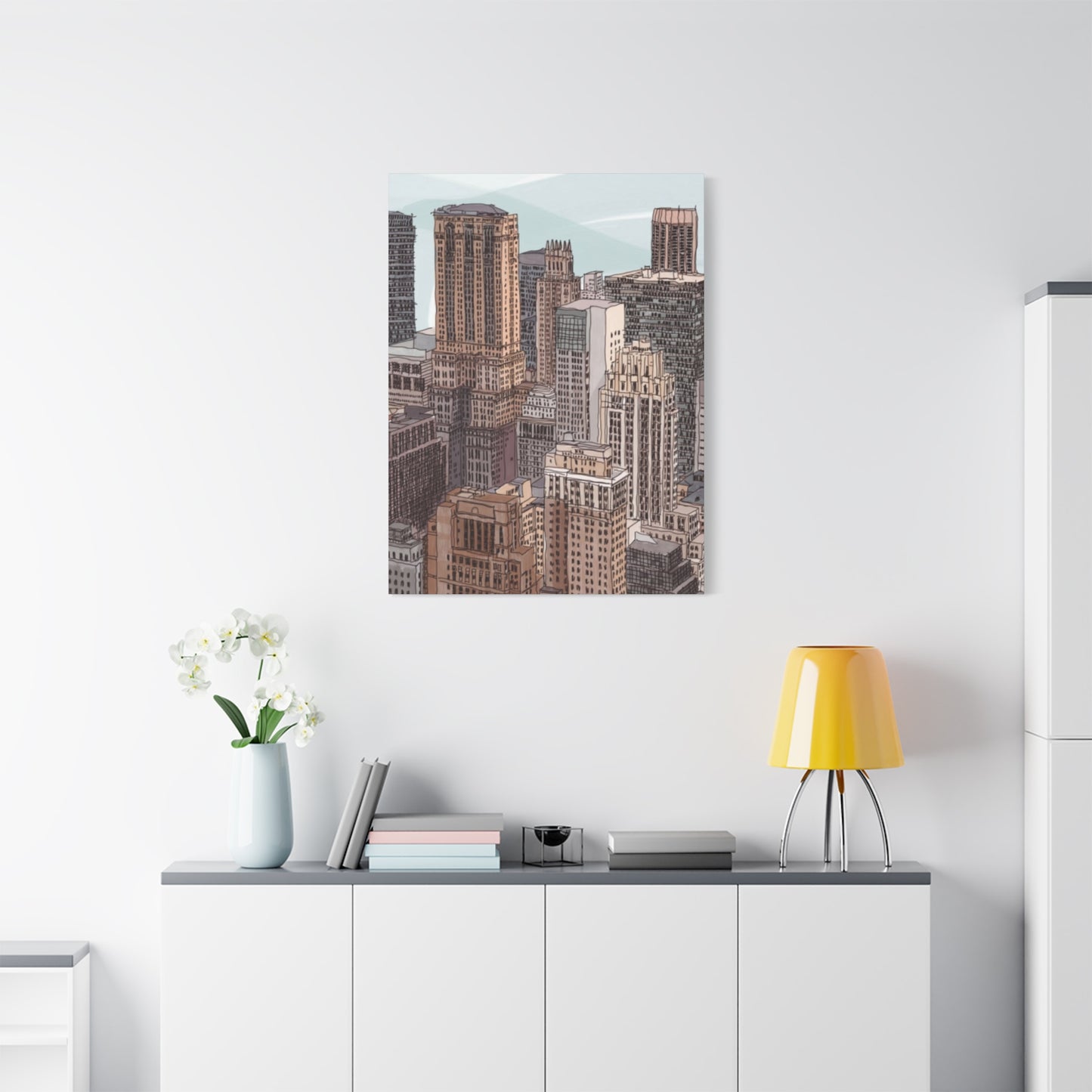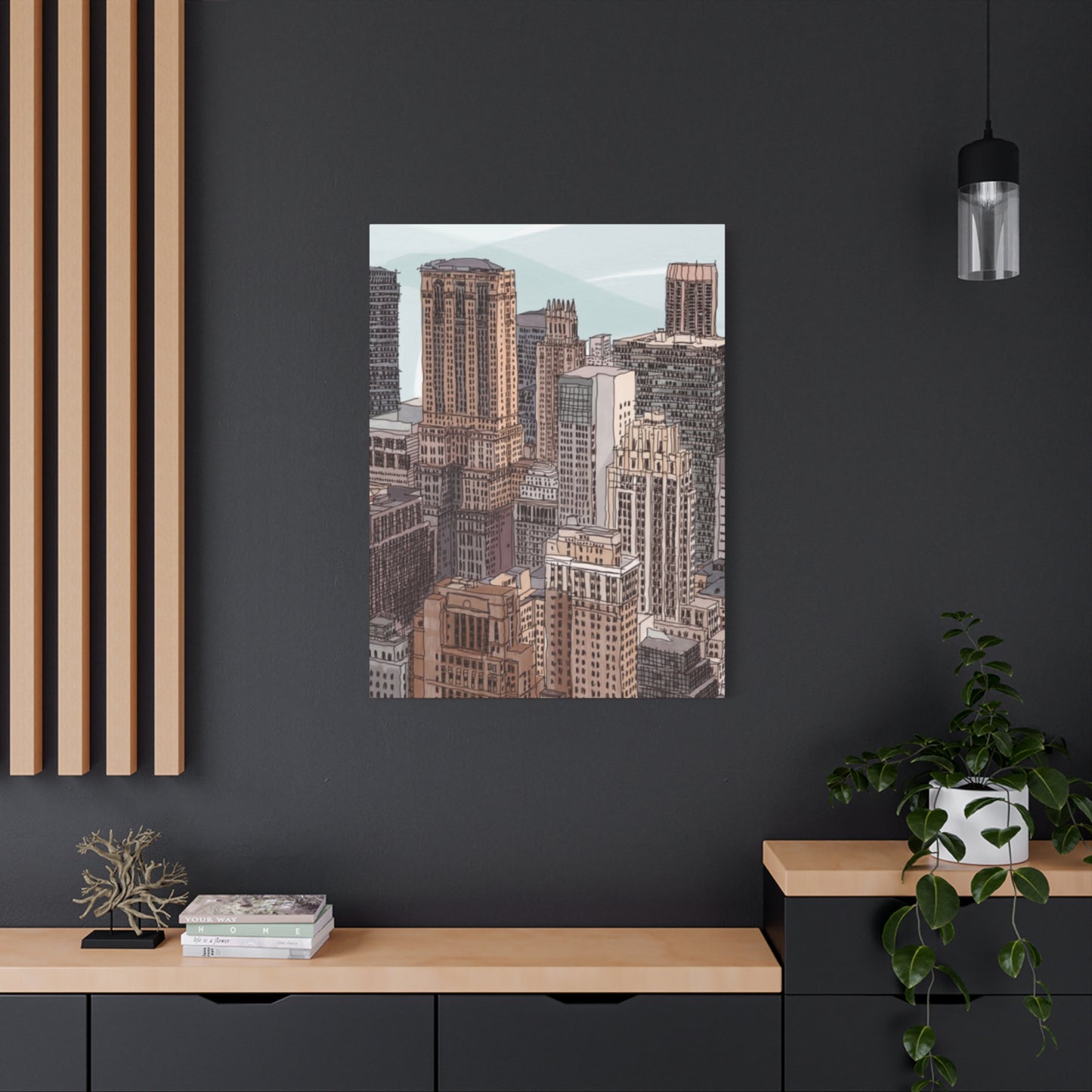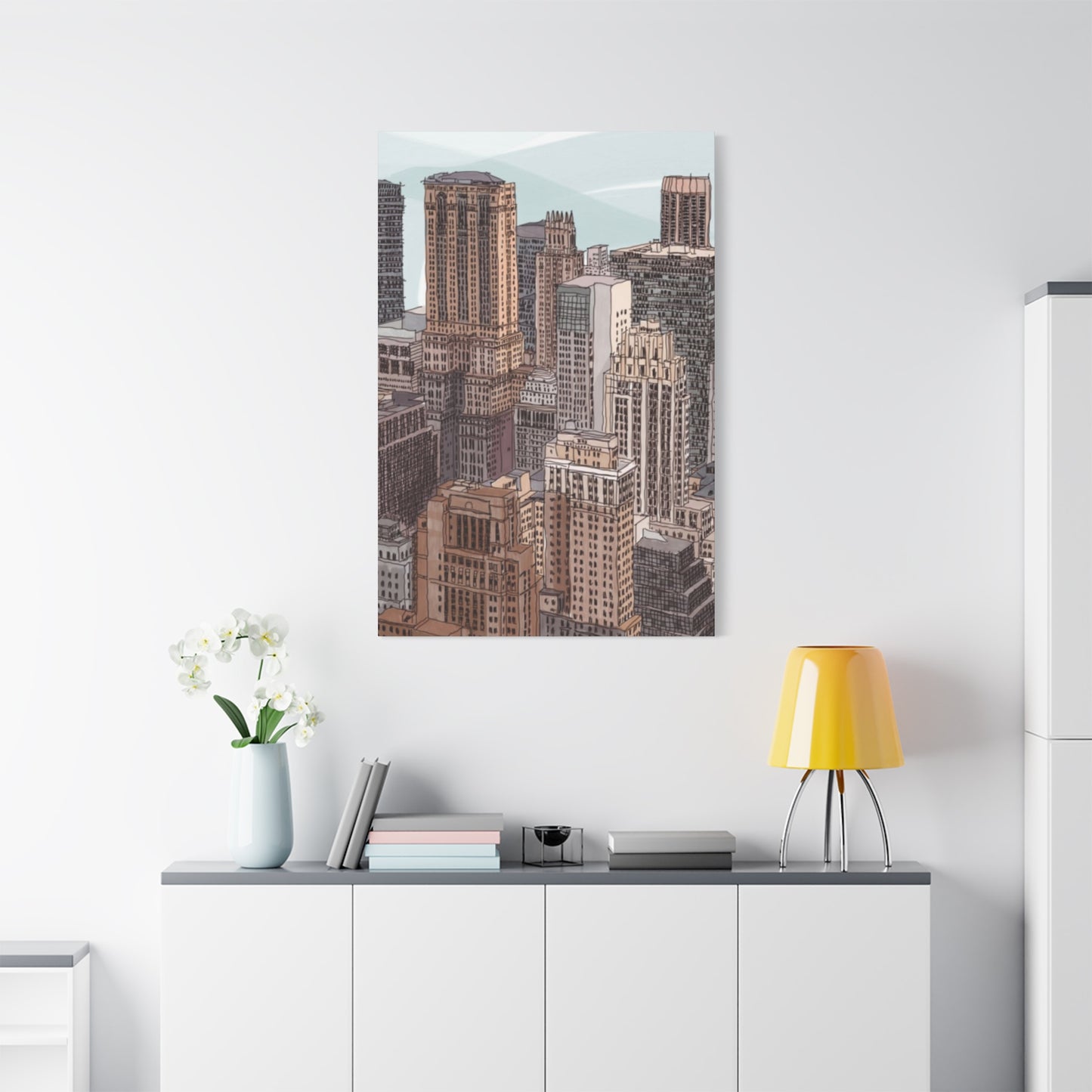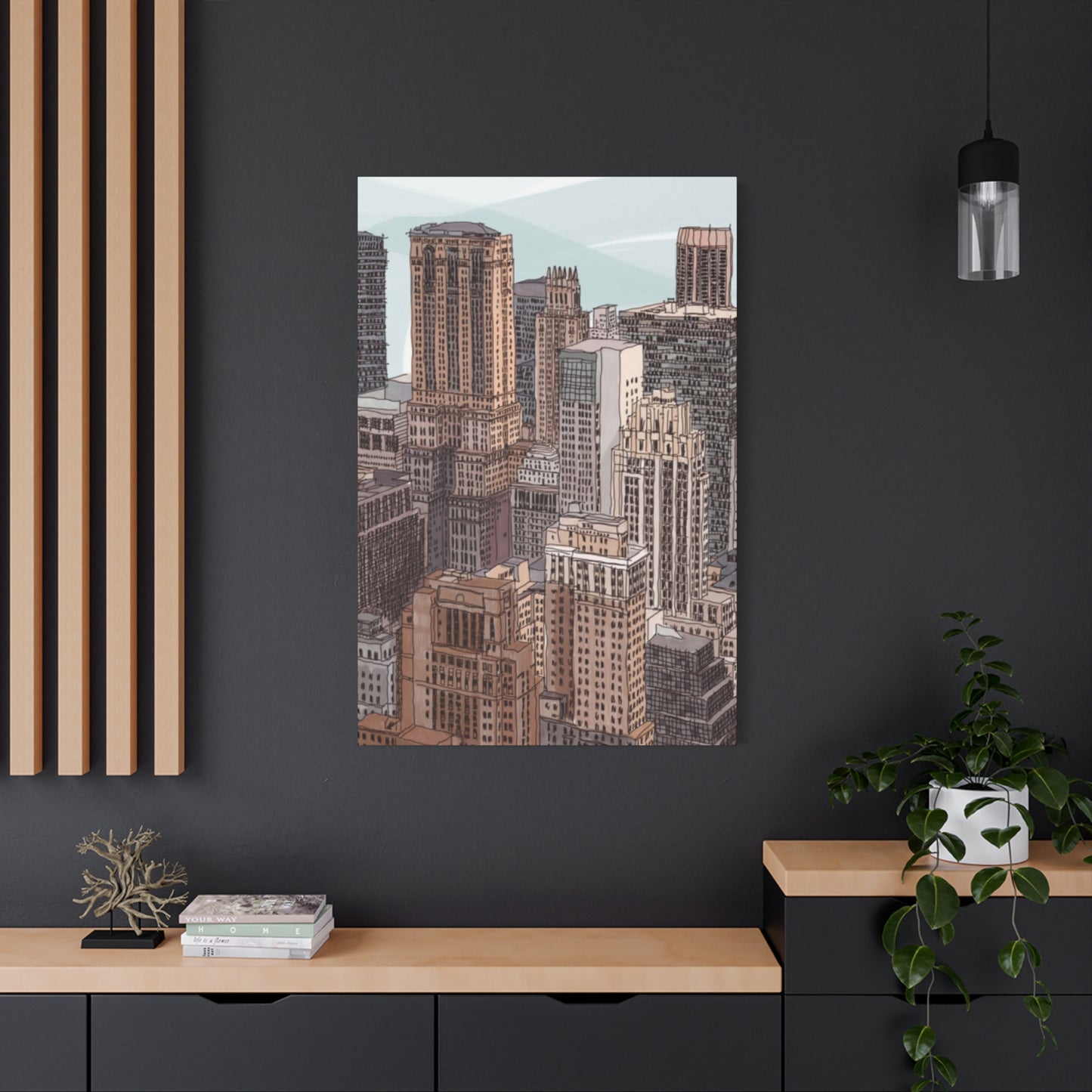Timeless Beauty: How Manhattan Skyline Wall Art Transforms Any Room Into a Modern Sanctuary
The artistic representation of urban landscapes from elevated perspectives has captivated art enthusiasts and interior designers for generations. The breathtaking view of towering structures against the horizon creates a visual narrative that speaks to human achievement and architectural excellence. When captured through the lens of skilled photographers, these elevated perspectives transform into compelling visual statements that resonate with viewers on multiple levels.
The allure of metropolitan aerial photography lies in its ability to showcase the intricate patterns and geometric beauty of urban development. From hundreds of feet above ground level, the organized chaos of city streets becomes a tapestry of lines, shapes, and contrasts. The interplay between natural light and architectural surfaces creates dramatic shadows and highlights that emphasize the three-dimensional nature of urban environments. This photographic style captures not just buildings and streets, but the essence of human ambition and collective progress.
Professional photographers who specialize in aerial urban documentation understand the technical challenges and artistic opportunities presented by this genre. The timing of capture significantly impacts the final aesthetic, with golden hour lighting providing warm, inviting tones, while blue hour offers cooler, more dramatic atmospheres. Weather conditions also play crucial roles, as clear skies provide sharp definition, while misty or cloudy conditions can add layers of depth and mystery to compositions.
The transformation of these photographic captures into canvas prints elevates them from mere documentation to fine art pieces suitable for sophisticated interior spaces. The texture of canvas material adds dimension and character that standard photographic prints cannot replicate. The weave of canvas fabric creates subtle variations in how light reflects off the surface, giving the image a living quality that changes throughout the day as lighting conditions shift within the display space.
Design Integration Strategies for Modern Living Spaces
Incorporating large-format urban landscape artwork into residential spaces requires thoughtful consideration of scale, placement, and relationship to surrounding elements. A common mistake involves selecting pieces too small for the wall space available, which can make rooms feel disconnected and poorly planned. Metropolitan aerial photography works best when displayed at substantial sizes that allow viewers to appreciate the intricate details and sweeping scope of the composition.
The positioning of artwork relative to furniture and architectural features affects how effectively it functions as a design element. Centering large pieces above sofas or beds creates symmetrical balance that feels stable and intentional. The bottom edge of framed artwork should typically hang approximately eight to ten inches above furniture surfaces, creating visual connection while maintaining appropriate separation.
Color coordination between artwork and surrounding decor elements creates cohesive design schemes that feel purposeful and polished. Urban landscape photography often features neutral color palettes dominated by grays, blues, and earth tones, making these pieces highly versatile for integration with various design styles. The metallic accents found in architectural photography can be echoed through hardware, light fixtures, and decorative accessories to reinforce thematic consistency.
Lighting considerations play crucial roles in how artwork appears within interior spaces. Natural light from windows can create beautiful illumination throughout daylight hours, but positioning must account for potential glare issues and UV exposure concerns. Artificial lighting can be strategically positioned to highlight artwork during evening hours, with picture lights or adjustable track lighting providing focused illumination that emphasizes texture and detail.
The concept of visual weight influences how artwork balances within room compositions. Dark, densely detailed pieces carry more visual weight than lighter, more minimalist compositions. Understanding this principle helps designers create balanced arrangements where artwork neither dominates spaces nor disappears into backgrounds. Surrounding wall colors can be adjusted to either emphasize or soften artwork presence based on desired effects.
Creating gallery walls with multiple pieces requires careful planning of layout, spacing, and thematic consistency. While mixing different subjects can work in eclectic settings, maintaining cohesive themes through multiple aerial urban images creates more sophisticated, curated appearances. Spacing between pieces should typically range from two to four inches, close enough to create unified compositions while allowing each piece to maintain individual presence.
Psychological Impact of Urban Imagery in Interior Environments
The visual elements we surround ourselves with significantly influence mood, productivity, and overall psychological wellbeing. Urban landscape photography, particularly aerial perspectives, taps into fundamental human responses to height, scale, and spatial organization. These images can evoke feelings of aspiration and achievement by showcasing human capacity for creating complex, functional environments.
The presence of horizon lines in aerial photography provides visual elements that humans find inherently calming and organizing. Horizon lines create implicit divisions between earth and sky, establishing order within compositions that might otherwise feel chaotic. This organizational element translates to psychological benefits for viewers, who unconsciously register the stabilizing presence of horizontal elements.
Aerial perspectives create psychological distance from everyday street-level experiences, offering opportunities for contemplation and reflection. When we view familiar environments from unusual angles, our brains engage in active processing to reconcile new information with existing mental models. This cognitive engagement can be stimulating and energizing, making aerial urban imagery particularly suitable for workspaces and creative environments.
The complexity and detail present in metropolitan aerial photography provides visual interest that sustains attention over extended periods. Unlike simpler compositions that may be quickly absorbed and then ignored, intricate urban landscapes reward continued observation with newly discovered details and relationships. This quality makes such artwork particularly valuable in spaces where people spend significant time, as the pieces continue to engage rather than fading into background awareness.
Color temperature in photography significantly affects emotional responses to images. Cooler blue-toned urban landscapes can create feelings of calm professionalism, making them excellent choices for office environments and formal spaces. Warmer tones captured during golden hour lighting evoke comfort and approachability, working well in residential settings and hospitality environments.
The monumentality conveyed by aerial urban photography can inspire feelings of confidence and empowerment. Surrounding ourselves with images of human achievement and architectural excellence creates subtle psychological reinforcement of positive, ambitious mindsets. This makes metropolitan landscape artwork particularly popular in executive offices, conference rooms, and spaces designed to motivate and inspire.
Material Considerations and Longevity Factors
The archival quality of canvas prints depends heavily on material choices throughout the production process. Cotton canvas, particularly when produced from premium long-staple fibers, offers superior durability and resistance to environmental degradation compared to synthetic alternatives. The natural fibers in cotton canvas maintain flexibility over time, reducing the likelihood of cracking or deterioration that can affect lesser quality materials.
The wooden stretcher bars onto which canvas is mounted contribute significantly to overall structural integrity and longevity. Premium stretcher bars constructed from kiln-dried hardwoods resist warping and dimensional changes caused by humidity fluctuations. The corners of stretcher frames should feature reinforcement to maintain perfect angles and prevent loosening over years of display.
Humidity and temperature fluctuations represent the greatest environmental threats to canvas artwork. Extreme dryness can cause canvas materials to become brittle and crack, while excessive humidity may promote mold growth and material degradation. Maintaining stable environmental conditions between sixty and seventy degrees Fahrenheit with relative humidity around fifty percent provides ideal preservation conditions.
Direct sunlight exposure represents another significant risk factor for canvas print longevity. Ultraviolet radiation causes gradual fading of inks and degradation of canvas materials over time. Even with UV-resistant protective coatings, canvas prints displayed in locations receiving direct sunlight will show signs of deterioration more rapidly than those in protected locations. When sunlit placement is unavoidable, UV-filtering window films or protective glazing can extend artwork lifespan significantly.
The quality of initial printing processes establishes maximum potential longevity regardless of subsequent care and display conditions. Prints produced using archival pigment inks on premium materials and processed according to professional standards can potentially last for centuries with proper care. Conversely, prints made with inferior materials or substandard processes may show deterioration within years regardless of care quality.
Regular maintenance extends canvas print lifespan and preserves visual quality over time. Gentle dusting with soft, dry cloths removes accumulated particulates that can gradually embed in canvas weave and dull appearance. Protective coatings should be reapplied periodically according to manufacturer recommendations to maintain UV protection and surface integrity. Avoiding touch contact with canvas surfaces prevents oil transfer from skin that can gradually cause discoloration.
Comparative Analysis of Urban Photography Styles
Within the broad category of urban landscape photography, numerous stylistic approaches create distinctly different aesthetic effects. Documentary-style aerial photography emphasizes accurate, neutral representation of urban environments, capturing scenes without significant manipulation or artistic interpretation. This approach produces images that feel authentic and journalistic, appealing to viewers who value realism and accurate representation.
Abstract interpretations of urban landscapes focus on patterns, shapes, and geometric relationships rather than literal representation. Photographers working in this style may use extreme close-ups, unusual angles, or selective focus to transform recognizable structures into compositions emphasizing form over content. These abstract approaches create artwork that functions as contemporary design elements while maintaining connections to urban subject matter.
High-contrast black and white conversions of urban aerial photography produce dramatically different results than color presentations. Removing color information emphasizes tonal relationships, textures, and structural elements. Black and white urban landscapes often feel more timeless and classic than color versions, making them versatile choices for traditional and contemporary interiors alike.
Long-exposure techniques create unique aesthetic effects in urban aerial photography by capturing motion blur in moving elements while maintaining sharpness in static structures. Traffic becomes flowing rivers of light, while clouds blur into ethereal bands across skies. These techniques produce dreamlike qualities that transform documentary scenes into more interpretive, artistic compositions.
Seasonal variations dramatically affect the appearance and emotional impact of urban landscape photography. Summer scenes typically feature lush green parks and intense blue skies, creating vibrant, energetic compositions. Autumn introduces warm orange and gold tones as foliage changes, while winter scenes may feature dramatic snow coverage that simplifies compositions and creates striking tonal contrasts. Spring imagery often balances renewed greenery with the architectonic clarity that winter provides.
Night photography of urban environments creates entirely different aesthetic effects than daytime captures. Artificial lighting transforms cityscapes into glittering patterns of illuminated windows and streetlights. The contrast between brilliantly lit areas and dark shadows creates dramatic compositions with strong visual impact. Night urban photography often emphasizes the energy and vitality of metropolitan areas more effectively than daytime images.
Establishing Focal Points Through Large-Format Artwork
Large-format urban landscape prints function effectively as primary focal points within interior spaces, drawing attention and establishing design themes. The human eye naturally gravitates toward the largest visual elements in environments, making oversized artwork naturally dominant within room compositions. This quality allows single large pieces to anchor entire design schemes and establish atmospheric tone.
The placement of focal point artwork requires consideration of natural sight lines and traffic flow through spaces. Primary focal pieces should be positioned where they're visible from main entry points and seating areas, ensuring maximum impact and appreciation. Awkward placements behind doors or in peripheral locations waste the potential of statement pieces to influence overall spatial experience.
Supporting design elements should complement rather than compete with primary focal artwork. When a large urban landscape print functions as the room's centerpiece, other decorative elements should defer to this dominance through smaller scale or more subdued presence. This hierarchy creates organized, intentional-feeling spaces rather than cluttered, competing arrangements.
The color palette established by focal artwork can be echoed throughout spaces through textiles, accessories, and accent pieces. Identifying the dominant and accent colors within urban landscape photography and repeating them in pillows, throws, and decorative objects creates cohesive color stories that unify entire rooms. This technique makes spaces feel professionally designed and thoughtfully composed.
Negative space around large-format artwork contributes significantly to its impact and presence. Overcrowding focal pieces with excessive surrounding decoration diminishes their effectiveness and creates visual confusion. Allowing generous empty wall space around primary artwork lets pieces breathe and maintains their status as intentional focal points rather than elements in busy arrangements.
The conceptual relationship between artwork subject matter and room function can reinforce design intentions. Urban landscape photography naturally suits professional environments, home offices, and contemporary living spaces where its themes of achievement and modernity align with intended atmosphere. Understanding these conceptual connections helps designers make selections that support rather than contradict spatial purposes.
Professional Installation Guidelines and Best Practices
Proper installation significantly affects both the appearance and longevity of canvas artwork. Wall surfaces should be examined for stability and suitability before installation attempts. Drywall anchors or mounting into wall studs provides secure attachment capable of supporting artwork weight over extended periods without failure.
The weight of large-format canvas prints necessitates robust mounting hardware appropriate for size and mass. Standard picture hanging wire may prove inadequate for substantial pieces, with heavy-duty wire or direct mounting brackets providing more reliable support. Hardware should be rated for weights significantly exceeding actual artwork mass to provide safety margins.
Leveling artwork during installation ensures professional-appearing results. Digital levels or traditional bubble levels help achieve perfect horizontal alignment, while measuring equal distances from ceiling and adjacent walls centers pieces appropriately. Taking time to carefully level and position artwork prevents amateurish appearances that diminish visual impact.
The height at which artwork hangs significantly affects viewing experience and spatial integration. Standard gallery height places artwork centers approximately sixty inches from floor level, roughly corresponding to average human eye height. This positioning creates comfortable viewing angles that don't require looking significantly up or down.
Security concerns may warrant additional protective measures beyond standard hanging hardware, particularly for valuable pieces in public or semi-public spaces. Security brackets, mounting plates, or even museum-quality security systems provide protection against theft while maintaining appearance and accessibility. Insurance considerations may also influence security decisions for high-value artwork.
Professional installation services offer expertise and equipment that can be particularly valuable for large, heavy, or expensive artwork. Experienced installers understand proper techniques, possess appropriate tools, and carry insurance covering potential installation-related damage. For significant investments, professional installation costs represent small percentages of total artwork value while providing peace of mind.
Marketing and Commercial Applications
Urban landscape photography on canvas finds extensive commercial applications beyond residential decoration. Corporate offices utilize metropolitan imagery to project professional, sophisticated brand images. The presence of quality artwork in business environments signals attention to detail and commitment to creating inspiring workspaces for employees and impressive environments for clients.
Hospitality industry venues including hotels, restaurants, and entertainment spaces use large-format urban artwork to establish atmospheric tone and geographic identity. Properties located in or near major metropolitan areas often feature local urban landscape imagery that reinforces location identity and creates connections between interior spaces and surrounding environments.
Medical facilities have increasingly recognized the benefits of quality artwork in creating calming, dignified environments for patients and visitors. Urban landscape photography offers neutral, non-controversial subjects that provide visual interest without triggering emotional responses inappropriate for healthcare settings. The professionalism conveyed by quality artwork contributes to perceptions of facility quality and care standards.
Educational institutions use artwork to create inspiring environments that support learning and creativity. Universities and private schools increasingly invest in quality interior design including substantial artwork programs. Urban landscape photography celebrating architectural achievement and human innovation aligns well with educational missions of preparing students for professional success.
Real estate staging professionals utilize artwork strategically to help properties show optimally during sale processes. Large-format urban landscape pieces can make spaces feel more upscale and design-forward, potentially influencing buyer perceptions and property valuations. The neutral subject matter works across diverse buyer demographics while adding visual impact.
Event spaces and temporary installations use canvas prints for creating branded environments and atmospheric settings. The portability and durability of canvas prints make them practical for temporary applications where traditional framed artwork would be impractical. Custom printing of specific urban imagery can support themed events or corporate branding initiatives.
Regional Architectural Styles and Their Photographic Appeal
Different metropolitan areas feature distinct architectural characters that influence the aesthetic qualities of aerial photography captured there. Cities with predominantly modernist architecture create compositions dominated by clean lines, geometric forms, and rational organization. The simplicity and clarity of these environments produce images with strong graphic impact suitable for contemporary interiors.
Historic urban cores featuring traditional architecture styles create more complex, textured compositions with rich detail and visual depth. The irregular rooflines, varied building heights, and organic street patterns of older cities produce imagery with romantic, nostalgic qualities. These compositions often appeal to viewers appreciating history, tradition, and architectural craftsmanship.
Coastal metropolitan areas offer unique opportunities for photographers to contrast dense urban development with expansive water features. The boundary between land and water creates natural compositional elements that organize images and provide visual relief from structural density. The presence of harbors, marinas, and waterfront development adds variety and interest to compositions.
Desert and arid region cities present distinctive color palettes and atmospheric qualities different from humid climate locations. The clarity of dry air allows for sharp distant detail, while earth-toned surroundings create warm, harmonious color relationships with urban development. The contrast between dense urban areas and surrounding undeveloped desert landscapes emphasizes human achievement against harsh natural environments.
Cities featuring significant topographic variation offer dramatic opportunities for showing elevation changes and geographic context. Urban development cascading across hillsides creates dynamic compositions with strong diagonal elements. The ability to see multiple elevation levels simultaneously adds depth and complexity that flat city environments cannot provide.
Green cities with extensive urban forestry and park systems create imagery balancing built and natural environments. The contrast between geometric structures and organic vegetation forms provides visual variety and suggests environmental consciousness. These compositions often convey messages about sustainability and quality of life that resonate with contemporary values.
Coordination with Architectural Interior Styles
Industrial-style interiors characterized by exposed brick, concrete surfaces, and visible mechanical systems pair naturally with urban landscape photography. The subject matter echoes the aesthetic celebration of construction and infrastructure visible in industrial design. Raw materials and honest structural expression common to both create harmonious relationships.
Mid-century modern interiors featuring clean lines, organic curves, and minimal ornamentation complement aerial urban photography beautifully. The emphasis on form and function without excessive decoration aligns with photographic approaches celebrating architectural geometry. Period-appropriate color palettes featuring earth tones and accent colors coordinate well with urban landscape imagery.
Contemporary minimalist spaces benefit significantly from carefully selected large-format artwork that provides focal interest without contradicting minimal aesthetic principles. Urban aerial photography offers sufficient visual complexity to prevent sterility while maintaining the clean, uncluttered feel essential to minimalist design. The neutral color palettes typical of urban photography integrate easily with minimalist color schemes.
Traditional and transitional interiors can successfully incorporate urban landscape photography when selections and framing coordinate with established design vocabularies. Black and white presentations often work better than color in traditional settings, as they reference historical photographic traditions while maintaining contemporary relevance. Substantial wood frames can help bridge between contemporary subjects and traditional contexts.
Eclectic interiors celebrating personality and individuality through mixed styles and periods accommodate urban photography easily within their accepting design frameworks. The key to success in eclectic settings involves ensuring artwork scale and presence appropriately balance other strong visual elements. Urban imagery should contribute to overall visual interest rather than disappearing among competing elements.
Scandinavian design emphasizing natural light, pale colors, and organic materials creates interesting contrasts with urban photography subjects. The juxtaposition between natural design elements and metropolitan architectural subjects can create engaging tension that energizes spaces. Maintaining cohesion requires careful attention to color relationships and tonal values.
Photographic Techniques Creating Distinctive Aesthetics
Tilt-shift photography techniques create unique miniature effects by manipulating depth of field in unconventional ways. When applied to aerial urban photography, these techniques make real cities appear as small-scale models, creating whimsical, playful impressions. The selective focus draws attention to specific areas while softening surrounding details into blur.
High dynamic range imaging combines multiple exposures to capture detail in both brightest highlights and deepest shadows beyond what single exposures can record. This technique proves particularly valuable for urban photography where dark building shadows and bright sky often exceed camera sensor capabilities. HDR processing can create either naturalistic results or more dramatic, artistic interpretations depending on processing approaches.
Infrared photography records wavelengths invisible to human eyes, creating surreal imagery where vegetation appears white and skies darken dramatically. Urban landscapes photographed in infrared take on dreamlike qualities quite different from standard color or black and white presentations. These unconventional techniques appeal to buyers seeking distinctive, conversation-starting artwork.
Panoramic stitching techniques combine multiple individual frames into ultra-wide compositions capturing more scene area than single shots allow. These expansive presentations emphasize the scale and scope of urban environments, creating immersive viewing experiences. The extreme width-to-height ratios of panoramic images suit particular architectural applications like long corridors or spaces above lengthy furniture pieces.
Time-lapse sequence compositing combines images captured over extended periods into single frames showing temporal progression. Multiple positions of the sun, moving shadows, and changing light qualities can be merged, creating impossible single-moment images that compress time. These techniques produce surreal results that challenge viewers' perceptions while maintaining photographic authenticity in individual elements.
Motion blur techniques selectively show movement within static compositions, creating dynamic energy in otherwise static scenes. Traffic becomes flowing light trails while buildings remain sharp, suggesting the continuous activity and energy of urban environments. These techniques transform documentary images into more interpretive, artistic statements.
Conservation and Preservation for Future Generations
Proper conservation practices ensure artwork survives for enjoyment by future generations while maintaining aesthetic and monetary value. Professional conservators understand appropriate materials and techniques for preservation and can advise regarding best practices for specific situations and artworks. Consulting conservation professionals before problems develop prevents damage more effectively than attempting remediation after issues appear.
Climate control represents the most important long-term preservation factor for canvas artwork. Maintaining stable temperature and humidity prevents the expansion and contraction cycles that stress materials and accelerate deterioration. In regions with extreme seasonal climate variations, climate-controlled display spaces become essential for valuable artwork protection.
Light exposure management requires balancing visibility and enjoyment against preservation concerns. Museum-quality preservation might dictate extremely low light levels inconsistent with residential display purposes, requiring compromises. Understanding acceptable exposure levels and implementing protective measures allows reasonable enjoyment while minimizing long-term damage.
Protective framing with UV-filtering glazing provides substantial preservation benefits while slightly altering viewing experience. The glass or acrylic barriers protect against environmental contaminants, physical contact, and light damage while introducing potential reflection and glare issues. For extremely valuable pieces, these tradeoffs favor protection over completely unobstructed viewing.
Documentation through professional photography creates permanent records of artwork condition at specific times. These condition reports prove valuable for insurance purposes and provide baselines for monitoring changes over time. Detailed documentation should include overall views and close-ups showing any existing condition issues.
Disaster preparedness planning considers potential threats including fire, flood, earthquake, and theft. Quick-release hanging systems allow rapid artwork removal during emergencies when time permits. Insurance coverage appropriate to artwork value provides financial protection when physical protection fails.
Community Impact and Urban Pride
High-quality photographic documentation of cities contributes to civic pride and community identity. Residents seeing their home cities portrayed beautifully gain appreciation for familiar environments and may develop stronger connections to places. This pride can translate into greater civic engagement and support for urban improvement initiatives.
Local businesses and cultural organizations use iconic urban imagery for promotional purposes, creating visual associations between locations and activities. Tourism marketing heavily utilizes beautiful urban photography to attract visitors and communicate destination appeal. The economic impacts of effective place marketing through quality imagery can be substantial for cities and regions.
Public art programs increasingly incorporate photographic installations including large-format urban landscape images. These installations make art accessible to broad audiences while celebrating local identity and achievement. Temporary and permanent installations can activate underutilized spaces and contribute to urban vitality.
Gentrification debates sometimes involve discussion of how areas are portrayed visually. Artistic documentation that emphasizes beauty and potential may accelerate gentrification processes by increasing area desirability. These complex dynamics mean urban photography intersects with important social and economic issues beyond aesthetic considerations.
Historical preservation benefits from comprehensive photographic documentation of urban environments. As cities continually evolve through demolition and new construction, photographic records become increasingly important for understanding past conditions. This documentation serves future historians and preservation advocates working to protect significant structures.
Disaster documentation and recovery planning utilize aerial photography to assess damage and plan reconstruction following major events. The comparison between pre-disaster and post-disaster imagery helps communities understand impacts and prioritize recovery efforts. These practical applications demonstrate photography's utility beyond aesthetic purposes.
International Market Variations and Preferences
Cultural differences significantly influence aesthetic preferences and subject matter appeal across international markets. While contemporary minimalist design has achieved global reach, regional variations persist in color preferences, compositional styles, and subject matter desirability. Artists and galleries targeting international markets must understand these variations to position work effectively.
Asian markets have shown strong interest in urban photography, particularly images of internationally recognized cities. The rapid urbanization occurring throughout Asia creates cultural contexts where metropolitan imagery resonates powerfully with emerging middle classes. Quality and authenticity expectations in these markets demand premium production values and genuine artistic merit.
European collectors often favor more subtle, understated presentations compared to North American preferences for bold, high-impact imagery. The longer artistic traditions in European markets create sophisticated, discerning audiences appreciating nuance and craftsmanship. Historical appreciation for photography as art form means European markets often show greater willingness to invest substantially in quality work.
Middle Eastern markets demonstrate appreciation for large-scale, impressive artwork reflecting wealth and sophistication. Contemporary architecture and design throughout the region create contexts where bold urban photography integrates naturally. The international character of major Middle Eastern cities means imagery from global metropolitan centers appeals to cosmopolitan populations.
Latin American markets balance appreciation for contemporary design with strong regional artistic traditions. Urban photography succeeding in these markets often incorporates distinctive local architectural characteristics rather than generic international style. The vibrant color palettes common in Latin American design may influence processing and presentation approaches for regional success.
African markets represent emerging opportunities as economic development creates expanding middle and upper classes with disposable income for art purchases. Local urban documentation celebrating African cities may prove particularly successful as markets mature. International artists and galleries are beginning to recognize African market potential and adapt offerings accordingly.
Technical Specifications for Optimal Results
Image resolution requirements for large-format printing depend on viewing distance and desired detail level. Standard recommendations suggest 150 to 300 pixels per inch at final print dimensions, with closer viewing distances requiring higher resolutions. Very large prints intended for viewing from substantial distances can utilize lower resolutions without visible quality loss.
File format selection impacts image quality and editing flexibility. Uncompressed formats including TIFF preserve maximum quality but create enormous file sizes. JPEG compression offers practical file sizes but introduces quality loss that accumulates through repeated editing. Professional workflows typically maintain master files in uncompressed formats while creating compressed versions for specific uses.
Color space selection affects how images display across different devices and how they print. Standard RGB color space proves adequate for most applications, but ProPhoto RGB or Adobe RGB provide expanded color gamuts beneficial for prints utilizing wide-gamut inks and papers. Proper color space management throughout workflows prevents unexpected color shifts.
Bit depth determines how many distinct tonal values images can contain. Eight-bit files provide 256 levels per color channel, adequate for most purposes but potentially limiting for images requiring extensive adjustment. Sixteen-bit files offer 65,536 levels per channel, providing greater editing latitude without posterization or banding artifacts.
Sharpening techniques applied during post-processing significantly affect perceived image quality and detail. Proper sharpening enhances apparent sharpness without creating visible halos or artifacts. Output sharpening should be adjusted based on final print size and viewing distance, as optimal settings vary substantially across different output scenarios.
Noise reduction processing removes unwanted grain from images captured at high ISO settings or in low light conditions. Excessive noise reduction destroys fine detail and creates artificial smoothness, while insufficient processing leaves distracting grain. Balancing noise reduction against detail preservation requires experience and careful evaluation at expected viewing sizes.
Collaboration Between Photographers and Interior Designers
Professional interior designers increasingly collaborate directly with photographers to create custom artwork for specific projects. These collaborations allow tailored solutions perfectly matched to client needs, space requirements, and design visions. Custom commissions eliminate compromises inherent in selecting from existing portfolios while ensuring unique, site-specific results.
The creative brief development process establishes clear expectations and parameters for custom photographic projects. Designers must communicate spatial context, color preferences, desired mood, and technical requirements including size and orientation. Photographers contribute expertise regarding feasible approaches, optimal locations, and creative possibilities within stated parameters.
Site visits and space analysis help photographers understand context where work will be displayed. Seeing actual light conditions, architectural features, and surrounding design elements allows photographers to optimize captures for specific situations. This contextual understanding typically results in more successful integration than generic selections provide.
Proofing and revision processes allow designers and clients to evaluate work before final production. Digital proofs can be reviewed on screen or through test prints showing how images will appear at final sizes. This collaborative review ensures satisfaction before committing to expensive large-format production.
Licensing and usage rights require clear definition when custom photography is commissioned for commercial or institutional applications. Exclusive rights, limited reproduction permissions, and public display authorizations all affect pricing and should be negotiated transparently. Properly structured agreements protect both photographer and designer interests while establishing clear expectations.
Portfolio development through designer collaborations provides photographers with completed project documentation showing work in context. These portfolio pieces demonstrate capability and vision to potential future clients more effectively than decontextualized individual images. Successful collaborations often lead to ongoing relationships and referrals.
Seasonal and Temporal Considerations in Urban Photography
The changing seasons dramatically transform urban landscape appearances and photographic opportunities. Autumn foliage creates temporary color displays that can dominate compositions when parks and street trees change colors. The brief period when leaves reach peak color creates urgency for photographers working to capture these fleeting conditions.
Winter conditions including snow coverage transform familiar urban scenes into dramatically different compositions. Fresh snow simplifies visual complexity by covering details and creating clean surfaces that emphasize major architectural forms. The blue tones in snow shadows contrast beautifully with warm building lights in twilight winter photography.
Spring brings renewed growth and increasingly longer days that extend golden hour photography opportunities. The fresh green of new foliage creates vibrant color accents throughout urban environments. Spring rain can create dramatic cloud formations and atmospheric conditions that add interest to urban photography.
Summer typically offers the longest shooting days with extensive twilight periods allowing blue hour photography at reasonable hours. The intense sun angles at summer midday create harsh shadows that most photographers avoid, concentrating activity during morning and evening hours. Summer haze can reduce distant detail but creates atmospheric depth in compositions.
Time of day dramatically affects lighting quality and atmospheric character in urban photography. Morning light typically offers clearer air with better distant visibility and cooler color temperatures. Evening light shows warmer tones but often includes more atmospheric haze from accumulated daily particulates. Midday lighting typically creates harsh contrasts generally considered least flattering.
Blue hour periods immediately following sunset or preceding sunrise provide magical lighting conditions particularly prized for urban photography. The balance between fading natural light and artificial illumination creates unique atmospheric conditions impossible to replicate at other times. City lights gain prominence while some sky brightness remains, creating dimensionality that fully dark conditions lack.
Storage and Archival Management Practices
Proper storage of canvas prints during periods when not displayed preserves condition and prevents damage. Climate-controlled storage spaces maintain stable temperature and humidity levels preventing material degradation. Storage areas should remain clean and free from pests that might damage organic canvas materials.
Prints should be stored flat when possible to prevent warping and stress on stretcher frames. If vertical storage becomes necessary, prints should lean against walls rather than hanging to minimize frame stress. Protective coverings prevent dust accumulation while allowing air circulation that prevents moisture buildup.
Inventory systems tracking stored artwork location and condition facilitate efficient collection management. Digital databases can include photographs, dimensions, insurance valuations, and condition notes for each piece. Comprehensive inventory systems prove particularly valuable for institutions and collectors managing substantial collections.
Periodic inspection of stored artwork allows early detection of condition issues before they become severe. Checking for mold growth, pest damage, frame deterioration, and other potential problems enables timely intervention. Establishing regular inspection schedules appropriate to collection size ensures consistent monitoring.
Transportation and handling procedures prevent damage during movement and reinstallation. Proper packing techniques protect corners and surfaces from impact and abrasion. Professional art handlers possess specialized knowledge and equipment for safely transporting valuable artwork, making their involvement advisable for significant pieces.
Digital archiving of artwork images provides backup documentation and enables remote viewing without accessing physical pieces. High-resolution digital captures preserve visual information that complements physical preservation. These digital archives also facilitate insurance claims, authentication, and scholarly research.
Psychological Ownership and Emotional Connection
The emotional bonds collectors develop with artwork significantly influence satisfaction and long-term enjoyment. Pieces acquired through careful selection processes that involved research and consideration typically generate stronger attachment than impulse purchases. The investment of time and thought in acquisition creates psychological ownership extending beyond legal possession.
Personal connections to depicted locations enhance emotional resonance with urban landscape photography. Images showing cities where collectors lived, visited, or have family connections carry autobiographical significance beyond aesthetic appeal. These personal narratives transform artwork from decoration into memory repositories and identity expressions.
The stories behind artwork acquisition become part of pieces' significance for collectors. Circumstances surrounding purchases, the artists met, or the installation processes remembered add layers of meaning beyond images themselves. These narratives enhance satisfaction and create talking points when sharing collections with visitors.
Display decisions reflect collector values and priorities, with prominent placement signaling importance and affection. The mental process of deciding where artwork hangs and what it replaces reveals hierarchies of preference. Regular rearrangement and rotation keeps collections feeling fresh while allowing rediscovery of temporarily stored pieces.
The pride of ownership contributes significantly to artwork satisfaction. Displaying quality pieces that receive compliments and generate conversation validates selection judgment and taste. This social dimension of collecting creates feedback loops reinforcing positive associations with acquired artwork.
Planned giving and estate considerations involve decisions about artwork futures after collectors' lifetimes. Determining whether pieces should remain within families, be donated to institutions, or be sold affects how collectors relate to work during lifetime ownership. These considerations add gravity and significance to collecting activities.
Authentication and Provenance Documentation
The authentication of photographic artwork prevents fraud and protects collector investments. Certificates of authenticity issued by photographers or authorized galleries provide official documentation of legitimacy. These certificates should include edition information, signatures, and dates matching the actual prints they accompany.
Edition numbering systems follow conventions that collectors should understand. Standard notation like fifteen out of twenty-five indicates the specific print number and total edition size. Artist proofs, printer proofs, and other special designations have specific meanings affecting value and collectability.
Signatures authenticate artwork while potentially adding value through direct artist connection. Original signatures applied during printing sessions carry greater significance than mechanical signatures or signatures on separate certificates. Signature placement, typically lower margins, follows conventions that serious collectors recognize.
Chain of custody documentation tracking ownership history from creation through current possession establishes provenance. Gallery sales receipts, auction records, and transfer documentation create paper trails authenticating legitimate ownership. Maintaining complete provenance records protects investments and facilitates future sales.
Professional appraisal services provide independent valuations for insurance, estate planning, and sale purposes. Qualified appraisers understand market conditions, artist reputations, and factors affecting specific pieces' values. Periodic reappraisals ensure valuations remain current as markets evolve and pieces appreciate.
Condition reports document artwork state at specific times, establishing baselines for monitoring changes and supporting insurance claims. Professional conservators can provide detailed condition assessments noting any existing damage, repairs, or concerns. These reports prove particularly valuable for significant purchases from secondary markets.
The Role of Gallery Representation
Gallery representation provides photographers with marketing, sales, and credibility benefits while connecting collectors with curated selections. Established galleries maintain collector databases and relationships that individual artists cannot easily replicate. This infrastructure facilitates sales while allowing photographers to concentrate on creative production.
Gallery curation serves quality control functions, as selective galleries only represent artists meeting established standards. Collectors benefit from this filtering, as gallery reputation provides assurance regarding artistic merit and investment potential. This gatekeeper role traditionally dominated art markets though online platforms now provide alternative pathways.
Exhibition opportunities through gallery representation provide visibility and prestige advancing artistic careers. Well-attended openings generate press coverage and social media exposure reaching potential collectors. Successful exhibitions enhance artist reputations and often lead to secondary opportunities.
Commission structures in gallery relationships typically allocate fifty percent of sale prices to galleries and fifty percent to artists. This division reflects galleries' substantial overhead costs including rent, staff, marketing, and operations. While seemingly steep, gallery commissions align incentives between artists and representatives.
Exclusive representation agreements require artists to direct all sales through specific galleries, preventing competition between multiple representatives. These arrangements benefit galleries by preventing price undercutting and inconsistent presentation. Artists gain focused promotion but sacrifice flexibility and potentially limit market reach.
Consignment arrangements where galleries hold inventory without purchasing it outright remain standard in photographic art markets. This model reduces gallery financial risk while limiting artist access to funds until sales complete. Clear consignment agreements protecting both parties' interests prevent misunderstandings and disputes.
Crisis and Emergency Preparedness
Natural disasters including floods, earthquakes, hurricanes, and fires threaten artwork collections and require advance planning. Evacuation priorities should identify most valuable and irreplaceable pieces for removal when time and circumstances permit. Pre-positioned packing materials enable faster emergency response than searching for supplies during crises.
Fire suppression systems in homes and institutions protect collections but may themselves pose risks. Water damage from sprinkler systems can destroy artwork even when fire is controlled. Alternative suppression systems using inert gases avoid water damage but involve higher installation costs and complexity.
Flood preparation includes elevating artwork above expected water levels and maintaining the ability to quickly move pieces to upper floors. Waterproof containers can protect smaller works though large canvas pieces present greater challenges. Advance identification of safe storage locations facilitates efficient emergency responses.
Earthquake preparedness requires securing artwork to prevent falling and ensuring hanging systems can withstand shaking. Museum-quality earthquake hooks and mounting systems provide greater security than standard hangers. Regular inspection ensures mounting hardware remains secure and functional.
Documentation photographing collections provides insurance claim support when physical artwork is damaged or destroyed. Digital files stored in cloud services or off-site locations survive local disasters that destroy physical records. Comprehensive documentation should include condition reports, purchase receipts, and appraisals.
Insurance adequacy requires regular review ensuring coverage limits match current valuations and collection contents. Standard homeowner policies typically provide inadequate coverage for significant art collections. Specialized fine art insurance policies offer better protection and more appropriate claim processes for valuable collections.
Conclusion:
The artistic documentation of urban environments from elevated perspectives represents one of the most compelling genres in contemporary photography. The combination of technical skill required, aesthetic possibilities available, and cultural significance embedded in metropolitan imagery creates artwork that resonates across diverse audiences. From casual decorators seeking attractive additions for homes to serious collectors building significant holdings, aerial urban photography offers accessible entry points and sophisticated depths to explore.
The transformation of photographic captures into premium canvas prints elevates digital images into physical objects carrying presence and permanence that screen displays cannot replicate. The tactile reality of stretched canvas, the subtle texture of fabric weaves, and the substantial physical presence of large-format pieces create viewing experiences fundamentally different from digital imagery consumption. This physicality connects contemporary photographic art to centuries of painting traditions while embracing modern technology and aesthetics.
The practical considerations surrounding selection, production, installation, and maintenance of canvas artwork require attention but need not overwhelm potential buyers. Understanding basic principles regarding quality materials, proper display conditions, and appropriate care practices enables anyone to successfully incorporate fine photographic artwork into living or working environments. The investment of time learning these fundamentals pays dividends through enhanced enjoyment and preserved value.
The emotional and psychological impacts of surrounding ourselves with quality visual art extend far beyond superficial decoration. The images we choose to display reflect and reinforce our values, aspirations, and identities. Urban landscape photography celebrating human achievement and architectural beauty creates environments that inspire ambition and creativity. The daily exposure to excellent photography subtly educates visual literacy and aesthetic appreciation in ways that accumulate throughout lifetimes.
The commercial applications of urban aerial photography in professional environments demonstrate its broad appeal and effectiveness across contexts. From corporate headquarters to hospitality venues, from healthcare facilities to educational institutions, quality artwork contributes to successful spatial experiences. The investment in premium artwork signals organizational values and commitment to creating excellent environments for employees, clients, and visitors.
The technological advances continuing to reshape photographic practice and print production promise exciting future developments in this artistic field. Higher resolution captures, improved color reproduction, more durable materials, and innovative display technologies will expand creative possibilities and enhance viewer experiences. Artists embracing these technologies while maintaining focus on fundamental aesthetic principles will lead the field forward.
The sustainability considerations increasingly influencing all consumer decisions apply equally to artwork acquisition and production. Choosing pieces produced through environmentally responsible practices, selecting works built for longevity over disposability, and supporting artists who demonstrate environmental consciousness align collecting activities with broader values. The cultural shift toward sustainability will likely accelerate, making early adoption both ethically sound and potentially economically advantageous.
The educational value of quality urban photography extends from elementary school classrooms to university research programs. Visual documentation of metropolitan environments provides primary source material for studying architecture, planning, geography, and countless other disciplines. The accessibility of excellent photography through various formats and price points democratizes access to valuable educational resources.

















